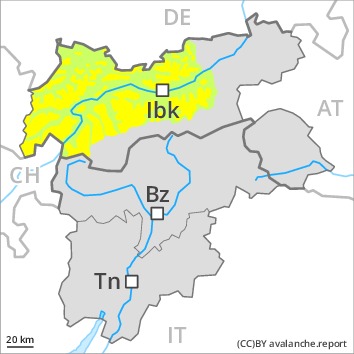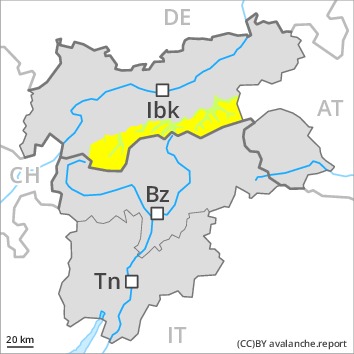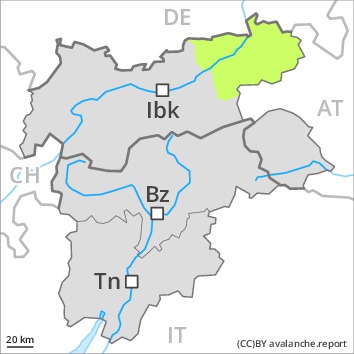
Danger level
 | treeline
|
Avalanche Problem
 | | Persistent weak layer |
|  | |  |
 | | Persistent weak layer |
|  | |  |

A sometimes treacherous avalanche situation will prevail. Weak layers in the upper part of the snowpack necessitate caution.
Dry avalanches can be triggered in the new snow and wind slab layers and reach quite a large size. This applies in particular on steep east, south and west facing slopes between approximately 2300 and 2600 m. Remotely triggered avalanches are possible. Avalanche prone locations for dry avalanches are to be found also on very steep shady slopes, also below the tree line. Places where surface hoar has been covered with snow are treacherous. The avalanche prone locations are covered with new snow and are barely recognisable, even to the trained eye. Whumpfing sounds and the formation of shooting cracks when stepping on the snowpack can indicate the danger.
Fresh wind slabs are small. These avalanche prone locations are to be found in particular adjacent to ridgelines.
In addition a latent danger of gliding avalanches exists.
Meticulous route selection is important.
Snowpack
dp.4: cold following warm / warm following cold
dp.8: surface hoar blanketed with snow
Faceted weak layers exist in the top section of the snowpack. This applies in particular on sunny slopes between approximately 2300 and 2600 m. The new snow-covered wind slabs are lying on surface hoar in some places. As a consequence of low temperatures the snowpack can settle hardly at all.
Some snow has fallen. The wind was light.
In its middle, the snowpack is well consolidated. Towards its base, the snowpack is well consolidated.
Tendency
A sometimes treacherous avalanche situation will prevail.

Danger level
 | 2200m
|
Avalanche Problem

Individual avalanche prone locations for dry avalanches are to be found on very steep shady slopes above approximately 2200 m.
Weak layers in the lower part of the snowpack can be released especially by large additional loads. This applies in particular on very steep shady slopes above approximately 2200 m, as well as at transitions from a shallow to a deep snowpack, when entering gullies and bowls for example. In some cases the avalanches are medium-sized.
Snowpack
dp.1: deep persistent weak layer
Steep shady slopes above approximately 2200 m: The old snowpack will be prone to triggering in some places. Faceted weak layers exist in the bottom section of the snowpack. Older wind slabs are lying on surface hoar in some places.
Some snow has fallen.
Tendency
The avalanche danger will persist.

Danger level
 | 2000m
|
Avalanche Problem

The current avalanche situation calls for experience in the assessment of avalanche danger.
A sometimes treacherous avalanche situation will prevail. This applies in particular in the south. Weak layers in the upper part of the snowpack can still be released in some place by winter sport participants in particular on steep sunny slopes. This applies in particular between approximately 2300 and 2600 m. Mostly the avalanches are medium-sized.
Also places where surface hoar has been covered with snow are unfavourable. Caution is to be exercised in particular on very steep shady slopes, also at intermediate altitudes.
Snowpack
dp.6: cold, loose snow and wind
dp.4: cold following warm / warm following cold
Faceted weak layers exist in the top section of the snowpack. This applies in particular on sunny slopes between approximately 2300 and 2600 m. The new snow-covered wind slabs are lying on surface hoar in some places. Towards its base, the snowpack is well consolidated.
Some snow has fallen. The wind was light.
Tendency
Weak layers in the upper part of the snowpack necessitate caution.

Danger level

Low, level 1.
Wind slabs require caution. This applies on very steep shady slopes, and adjacent to ridgelines above approximately 2000 m. The avalanche prone locations are rare and are easy to recognise.
Snowpack
Some snow has fallen. From a snow sport perspective, in most cases insufficient snow is lying. Hardly any weak layers exist in the snowpack.
Tendency
Low, level 1.













